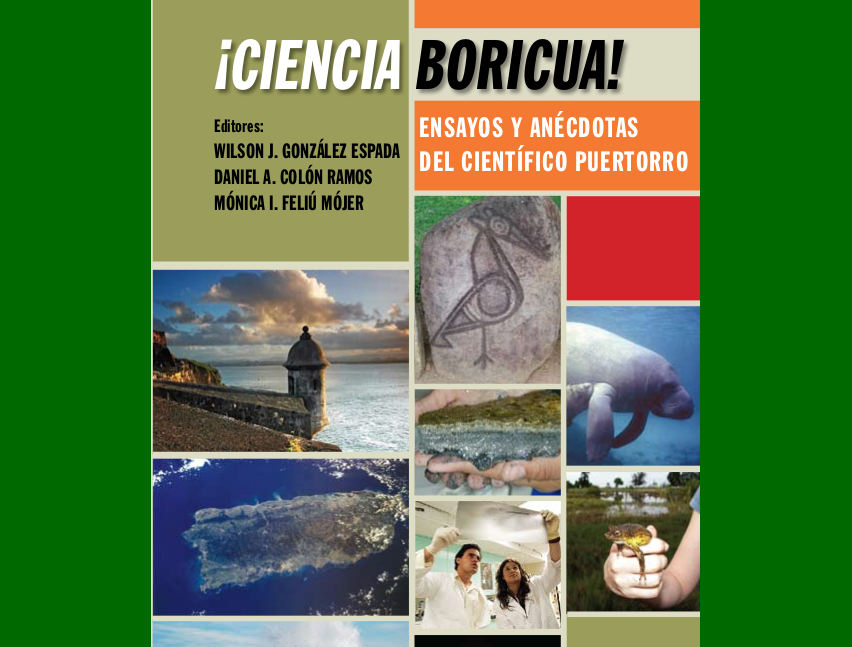RUM research group contributes to collaborative project with million-dollar NSF grant
Submitted by Ariadna S. Rubio Lebrón on
Clara E. Isaza Brando and Mauricio Cabrera Ríos, Ph.D., from the Departments of Biology and Industrial Engineering at the University of Puerto Rico (UPR) Mayagüez Campus (RUM), are team members of the EMBRIO Institute, a multidisciplinary and collaborative project with U.S. universities, funded with $12.5 million from the National Science Foundation (NSF), whose objective is to identify how cells organize themselves to fight attack and ensure their ability to survive at scales ranging from single cell to cell responses to tissue and wound closure.
The proposal, Emergent Mechanisms in Biology of Robustness Integration and Organization Institute (EMBRIO), is led by Purdue University, along with researchers from Indiana University, University of Notre Dame, University of Pennsylvannia and Morehouse College in Atlanta. Each participating institution contributes expertise from their respective research laboratories. The RUM team has been allocated approximately $500,000 for the next five years to contribute to its tasks.
"The idea is to try to tackle a very large problem that requires different approaches, expertise from various disciplines that will work in a coordinated manner to learn how systems react; from the cellular, tissue or organism level to external stimuli that can be chemical or mechanical. The purpose is to learn how these stimuli are processed by the cell, tissue or organism to react to adapt to the environment and preserve life," explained Dr. Isaza Brando.
According to the professor, the RUM research team will use the data provided by other collaborators of the Institute, who, in turn, are working on different focuses of the project, such as how plants respond to an infection, how tissue regenerates in animals, and how calcium behaves in an egg fertilized by a sperm, among other topics. The Mayagüez group will focus on what has been its forte in the past years, biological analysis with databases.
For his part, Dr. Cabrera Ríos said that as they advance, they will be able to establish a structure that connects not only the different institutions, but also the scales at the scientific level within the cell. Ideally, they will also be able to compare between the different kingdoms, such as animal and plant.
"Our contribution at the Institute will be that part of integration, both of established biological experiments, as well as computational simulations, image analysis, which, in turn, we will represent mathematically and statistically to create a network in which we can represent how that signaling is going to be done across scales and across kingdoms. Each of the participating universities and laboratories is initially providing their strengths and, in that way, we are integrating. At RUM we are very focused on our transdisciplinary work in biological data analysis," said Cabrera Ríos.
The ambitious proposal was accepted by the NSF under the Biology Integration Institutes (BII) program solicitation, which aims to understand how the processes that sustain life and enable biological innovation operate and interact within and across different scales of organization, from molecules to cells, tissues to organisms, species, ecosystems, biomes and the entire planet.
"It's a project that merits a lot of collaboration and requires constant and rapid entrepreneurship and learning. It is an excellent challenge for our University, as part of a broader global concept of knowledge," reiterated the professor.
In the opinion of both professors, who teach in the Bioengineering graduate program, one of the main benefits of this project is the opportunity it gives them to train the students in their laboratory, which currently has four undergraduates and four graduates, three from the Bioengineering doctoral program and one from the Biology master's program. Apart from the experience the students gain in the process and the economic relief of receiving a salary for their work, the EMBRIO Institute will enable them to visit other laboratories and exchange knowledge with researchers from the participating universities.
"If we can sum it up in one word, it is a great challenge. It is a question that has not been answered and that thanks to EMBRIO we can contribute to answering. If we do, then we would be creating what is called a rule of life and that is very exciting. Of course, it is difficult, but I think we are up to the task," Cabrera Ríos reiterated.
For his part, the RUM Rector, Dr. Agustín Rullán Toro, praised the professors for this achievement, which represents a great platform to expose the research culture of excellence of the UPR's Mayagüezano campus. "Being part of this prestigious group with universities of high caliber, places us in an important place of renown, which makes our strengths and talents visible, and helps us in the educational formation of future professionals in the field. Congratulations to Dr. Clara E. Isaza Brando and Dr. Mauricio Cabrera Rios for their brilliant performance, which has led them to be part of the project and contribute to science and society," he said.
###









